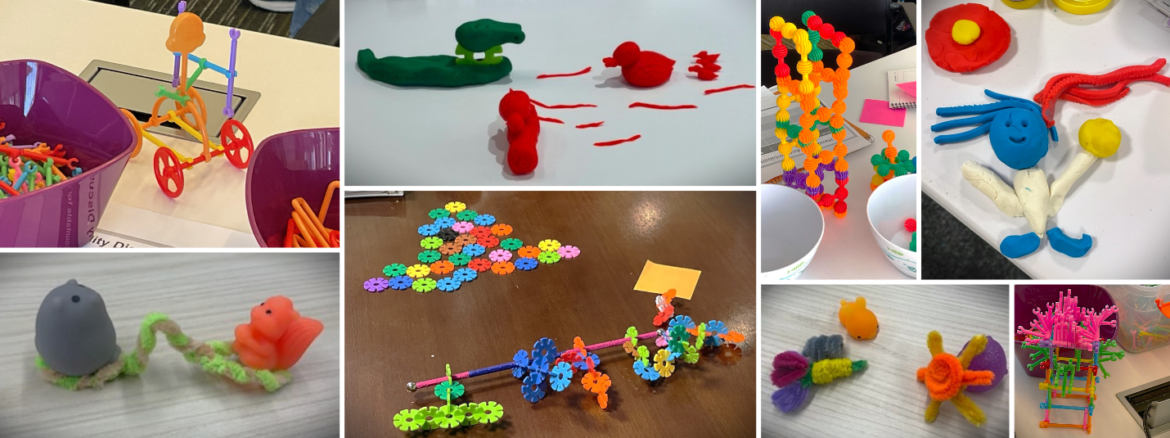
Playtime at Work: How Toys Transform Training
Picture this: you’re in a training session, and the presenter’s voice is starting to sound like a lullaby. Eyes glaze over and heads start nodding. Sound familiar? Instead, what if training sessions were more like playtime? Imagine building blocks, stretchy toys, and colored pencils scattered around, laughter filling the room. Sounds fun, right? Read on to explore how toys can revolutionize training environments.
The Magic of Toys: Transforming Organizational Training
The benefits of learning through play don’t end when you become an adult. While playing games sounds energizing, it’s hard to make the argument for “fun” in a professional environment. Thankfully, there are many compelling reasons for playing at work.
Engagement and Creative Thinking

Game-based learning and tactile toys, like playdough or bouncy balls, aren’t just fun; they’re functional. Toys and games give participants a physical way to release pent-up energy and prevent distractions. Studies suggest that traditional training methods often lead to a rapid decline in retained knowledge, with employees forgetting 50% of a training after one hour and 70% within a day, on average. Handling something tangible can keep learners interested, and retention is increased when participants are engaged in a fun and interactive learning environment.
Job Satisfaction and Team Dynamics
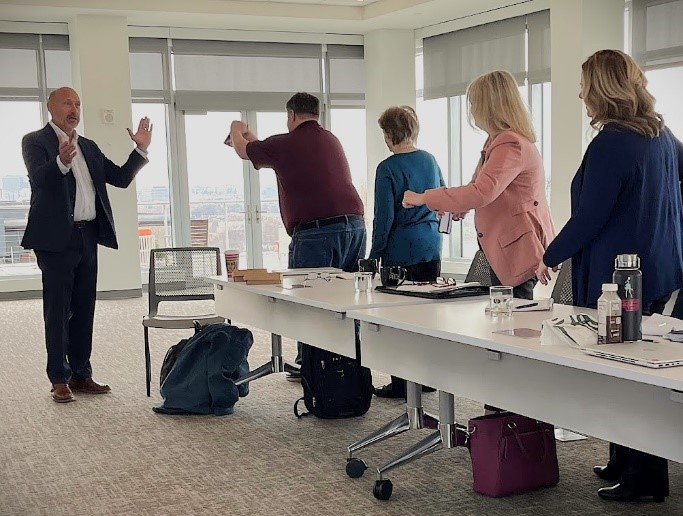
Incorporating elements of play in the workplace enhances job satisfaction by breaking the monotony and reducing stress. They also build trust among team members, encourage a sense of solidarity, and reduce hierarchical barriers. These interactions lead to long-term improvements in job performance. Adults who engage in play see an increase in energy, creativity, and overall job performance, and they learn new tasks more effectively and adapt to complex problems with innovative solutions.
Stress Relief and Emotional Well-being
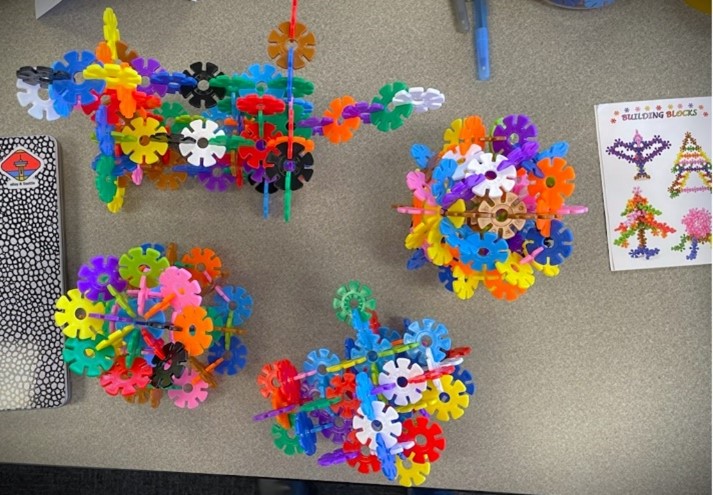
For adults, toys and play can provide a crucial respite from stress, improving mental health and emotional resilience. This is particularly beneficial in high-pressure work environments, where play can serve as a vital tool for emotional regulation and stress relief. Training sessions can also be stressful at times, particularly when the material is challenging or the stakes are high. Introducing tactile toys, such as magnetic sticks or interlocking disks, provides a physical outlet for this nervous energy, serving as tiny, portable calming aids to alleviate anxiety.
How to Rock Toys in Training
Now that we know why toys are so effective, let’s explore how can you implement them in a practical manner. Here are some expert tips:
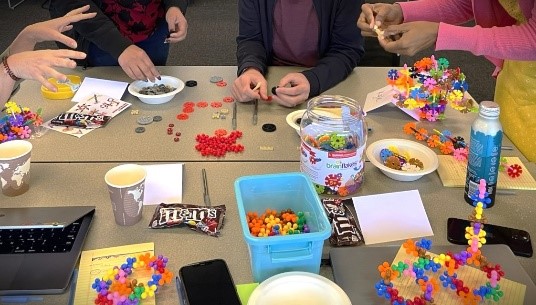 Kick Things Off with Icebreakers: To get started on the right foot, use colorful candy for icebreaker games, where participants take turns sharing something about themselves based on the color of the candy they pick. It’s a fantastic way to get everyone talking and laughing.
Kick Things Off with Icebreakers: To get started on the right foot, use colorful candy for icebreaker games, where participants take turns sharing something about themselves based on the color of the candy they pick. It’s a fantastic way to get everyone talking and laughing.
Team-Building Fun: Continue the fun with food and construction. Building challenges are a favorite: give teams spaghetti, tape, string, and modeling clay, then ask them to build the tallest freestanding structure they can in 12 minutes. This encourages teamwork and creativity while revealing important lessons about collaboration and innovation.
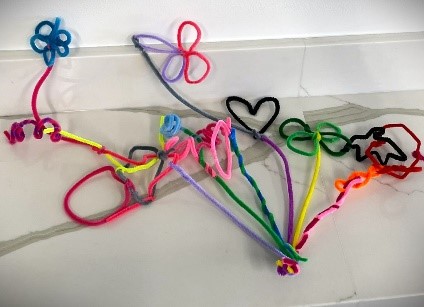 Creative Problem Solving: For those critical thinking moments, use pipe cleaners for problem-solving sessions. Set a challenge, like creating a representation of a company’s new strategy, and let teams brainstorm and construct their solutions. This approach requires participants to think outside the box and visualize abstract concepts, making learning both interactive and effective.
Creative Problem Solving: For those critical thinking moments, use pipe cleaners for problem-solving sessions. Set a challenge, like creating a representation of a company’s new strategy, and let teams brainstorm and construct their solutions. This approach requires participants to think outside the box and visualize abstract concepts, making learning both interactive and effective.
Facilitator Fan Favorites
With so many options available, what toys do trainers swear by? Here’s a breakdown of our top picks:
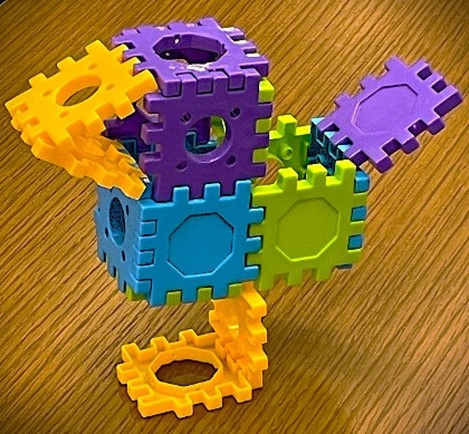 Construction Toys: Building blocks, interlocking bricks, and magnetic tiles work wonderfully for team building and creativity exercises. Team members can construct models that represent business concepts, or they can have fun building together as a bonding exercise.
Construction Toys: Building blocks, interlocking bricks, and magnetic tiles work wonderfully for team building and creativity exercises. Team members can construct models that represent business concepts, or they can have fun building together as a bonding exercise.
Stress Relief: Stress balls, slime, and fidget spinners keep hands busy and minds focused. They’re particularly useful in high-stress environments or long sessions where maintaining attention can be difficult.
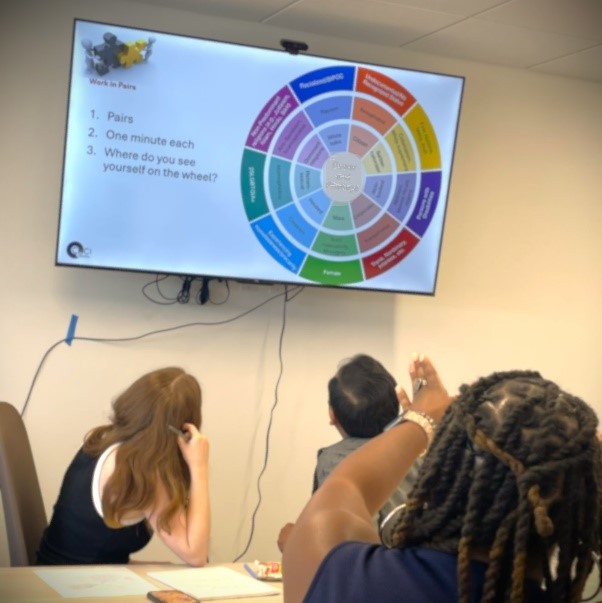 Puzzle Games & Brain Teasers: Puzzles and brain teasers stimulate intellectual curiosity, making them perfect for critical thinking and problem-solving exercises. For example, incorporating escape room-style puzzles or scavenger hunts into your training can make the material more engaging and stimulate intellectual curiosity.
Puzzle Games & Brain Teasers: Puzzles and brain teasers stimulate intellectual curiosity, making them perfect for critical thinking and problem-solving exercises. For example, incorporating escape room-style puzzles or scavenger hunts into your training can make the material more engaging and stimulate intellectual curiosity.
Interactive Whiteboards and Digital Toys: For the tech-savvy or remote work crowd, digital toys and interactive whiteboards can take engagement to the next level. They make learning dynamic and interactive, allowing for real-time collaboration and feedback.
Tips for Facilitators
To make the most out of your sessions, here are some ways to incorporate play in a productive manner:
Pick the Right Toys: If you are using toys, tailor them to your training goals for maximum effectiveness. For instance, puzzles are excellent for problem-solving, magnetic tiles can improve collaboration and creativity, and mixing multiple types of toys together can boost critical thinking. Matching the toy to the activity enhances the learning experience.
Be Open to the Outcome: The goal is not to create a magnificent art project; the goal is to give participants a way to engage their brains and stay focused during training sessions. Some participants will take pile of toys and build a massive multi-color tower, others will just manipulate a fidget spinner, and some will not touch the toys at all. All options are valid. The idea is to place different toys on the tables and see what happens.
Balance Fun and Learning: Striking a balance between fun and learning is key. The purpose of toys is to enhance the session, not create a distraction. Fun and learning can go hand in hand. For example, while molding with soft clay can be entertaining, align it with the session’s objectives to keep the focus on learning.
When it comes to learning, toys are more than just playful distractions. They tap into our inherent desire for interaction and tactile stimulation, bridging the gap between passive listening and active engagement. This connection is crucial in training environments where maintaining attention and interest can be challenging. So, next time you’re planning a training, don’t forget to pack some toys!
What are your favorite facilitator tricks? How have you used them in your sessions? Share your experiences in the comments below and let’s keep the conversation playful!


Leave A Comment